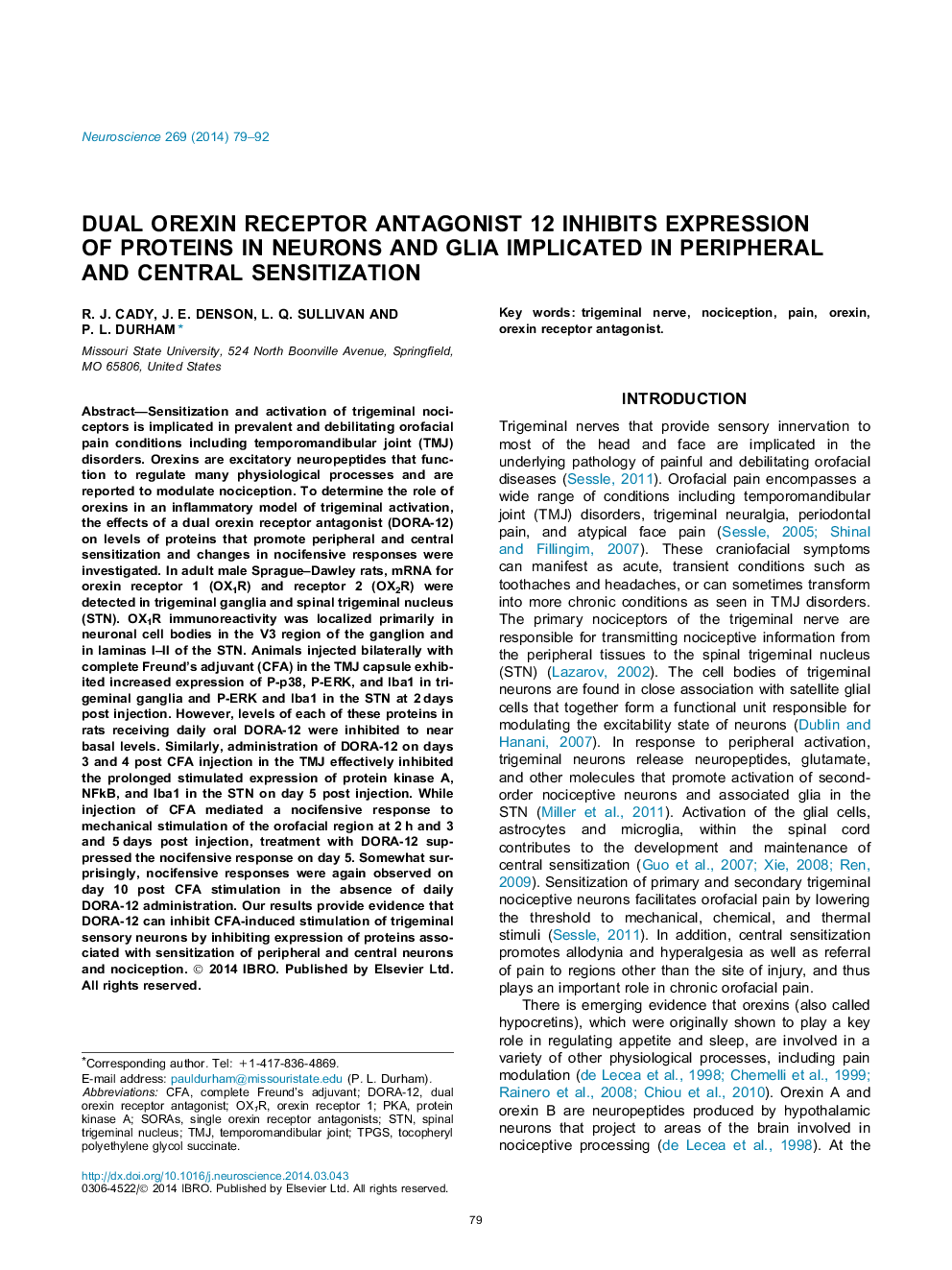| Article ID | Journal | Published Year | Pages | File Type |
|---|---|---|---|---|
| 6273901 | Neuroscience | 2014 | 14 Pages |
â¢mRNA for orexin receptors 1 and 2 was detected in the TG and STN.â¢DORA-12 inhibited CFA-mediated increases in inflammatory markers in the TG and STN.â¢DORA-12 transiently suppressed facial nocifensive responses to CFA.
Sensitization and activation of trigeminal nociceptors is implicated in prevalent and debilitating orofacial pain conditions including temporomandibular joint (TMJ) disorders. Orexins are excitatory neuropeptides that function to regulate many physiological processes and are reported to modulate nociception. To determine the role of orexins in an inflammatory model of trigeminal activation, the effects of a dual orexin receptor antagonist (DORA-12) on levels of proteins that promote peripheral and central sensitization and changes in nocifensive responses were investigated. In adult male Sprague-Dawley rats, mRNA for orexin receptor 1 (OX1R) and receptor 2 (OX2R) were detected in trigeminal ganglia and spinal trigeminal nucleus (STN). OX1R immunoreactivity was localized primarily in neuronal cell bodies in the V3 region of the ganglion and in laminas I-II of the STN. Animals injected bilaterally with complete Freund's adjuvant (CFA) in the TMJ capsule exhibited increased expression of P-p38, P-ERK, and lba1 in trigeminal ganglia and P-ERK and lba1 in the STN at 2Â days post injection. However, levels of each of these proteins in rats receiving daily oral DORA-12 were inhibited to near basal levels. Similarly, administration of DORA-12 on days 3 and 4 post CFA injection in the TMJ effectively inhibited the prolonged stimulated expression of protein kinase A, NFkB, and Iba1 in the STN on day 5 post injection. While injection of CFA mediated a nocifensive response to mechanical stimulation of the orofacial region at 2Â h and 3 and 5Â days post injection, treatment with DORA-12 suppressed the nocifensive response on day 5. Somewhat surprisingly, nocifensive responses were again observed on day 10 post CFA stimulation in the absence of daily DORA-12 administration. Our results provide evidence that DORA-12 can inhibit CFA-induced stimulation of trigeminal sensory neurons by inhibiting expression of proteins associated with sensitization of peripheral and central neurons and nociception.
